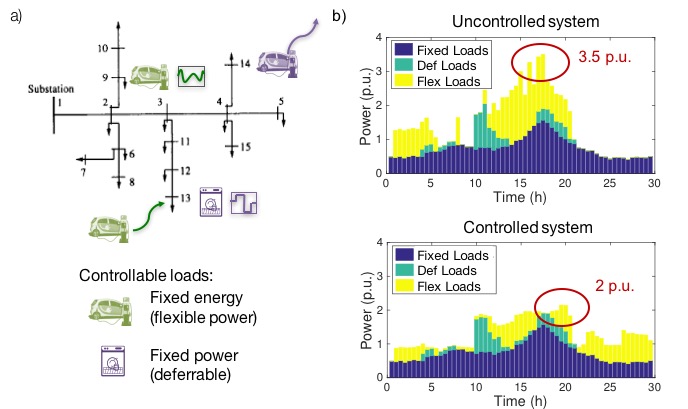Plug and Play Load Control for a Sustainable Distribution Grid
Demand-side management will play a key role for improving reliability and efficiency in an increasingly complex grid, balancing large demands, e.g., caused by electric vehicles. We develop techniques that automatically compute optimal load profiles, taking into account network and user requirements, and most importantly varying load connectivity.

While traditionally, power supply matches the fixed demand at any given time, modernized grids can leverage the flexibility of demand for utilizing resources more efficiently, often referred to as demand-side management. In particular electric vehicles represent not only a large load, but offer significant flexibility and the compelling capability of storing and providing energy for the grid. In addition, many traditional household loads can be deferred depending on the grid load. For example, a costumer may want the vehicle to be charged or dishes to be washed by a certain time, regardless of when the power is provided. This represents an enormous new potential for balancing a grid that relies on highly uncertain renewable energy.
We focus on three main challenges in this problem:
- Load connections vary due to their utilization by the costumer, who is generally not willing to compromise on the connection times;
- Grid safety has to be guaranteed, e.g. lines cannot be overloaded;
- The optimization of large populations of distributed loads has to be performed efficiently.
We have developed a new approach for optimizing load profiles to reduce peak power in a distribution grid that can deal with varying load connections on the fly in a collaboration with UC Berkeley. More details and references are available at the project website.
The ESC Member involved in this project is Professor Melanie Zeilinger at the Department of Mechanical and Process Engineering at ETH Zurich, where she is leading the Intelligent Control Systems group at the Institute for Dynamic Systems and Control.

